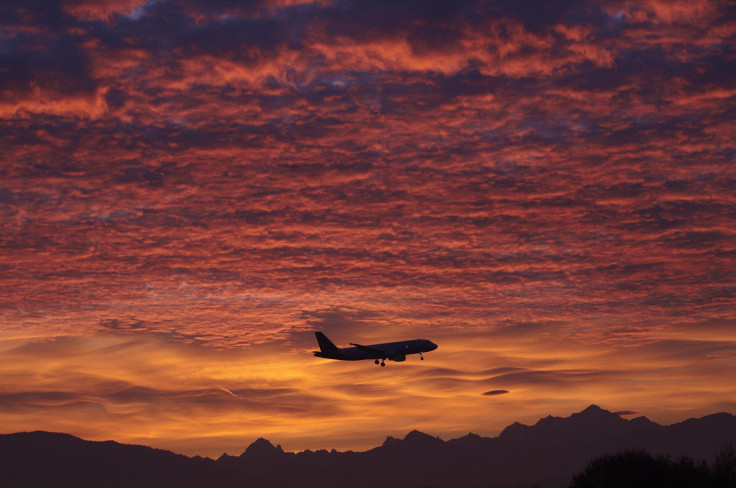Turbulence Ahead! Climate Change To Cause Bumpier Flights, Longer Trips

Buckle up, because it’s going to be a bumpy ride over the seas in the coming years as climate change increases the times -- and discomfort -- of trips over one of the world’s busiest flight corridors.
According to researchers from the University of Reading and the University of East Anglia in England, global warming will destabilize air currents at altitudes used by commercial airlines by 2050, dramatically increasing atmospheric turbulence.
“Clear-air turbulence changes significantly within the transatlantic flight corridor when the concentration of carbon dioxide in the atmosphere is doubled,” authors Paul D. Williams and Manoj M. Joshi explain in the study, published Monday in Nature Climate Change. Their research is said to be the first to examine the future of aviation turbulence.
Turbulence is primarily caused by vertical airflow, in other words updraughts and downdraughts around clouds and storms. Clear-air turbulence, meanwhile, is linked to atmospheric jet streams, which are like large rivers of air in the atmosphere. It’s this type of turbulence that’s projected to strengthen with anthropogenic climate change.
“Clear-air turbulence is especially difficult to avoid, because it cannot be seen by pilots or detected by satellites or on-board radar,” the authors explain, noting that planes already spend about 1 percent of cruise time in strong clear-air turbulence.
Williams and Joshi focused their investigation on the North Atlantic corridor, where some 600 flights cross between Europe and the Americas pass daily. Using a supercomputer to simulate likely changes to air currents above 10 kilometers in altitude, they found clear-air turbulence changed significantly within the transatlantic flight corridor when the amount of carbon dioxide in the atmosphere was doubled. At cruise altitudes within 50 to 75 degrees north and 10 to 60 degrees west in winter, for instance, most clear-air turbulence measures showed a 10 to 40 percent increase in median strength of turbulence and a 40 to 170 percent increase in the frequency of moderate or greater turbulence.
Evidence suggests that clear-air turbulence across the Atlantic has already increased by between 40 and 90 percent since 1958. Indeed, turbulence now injures hundreds of airline passengers each year and causes as much as $150 million in damages to aircraft, though exact figures are hard to come by. Williams and Joshi say this will only increase over the coming years.
“Our results suggest that climate change will lead to bumpier transatlantic flights by the middle of this century,” they say. “Journey times may lengthen and fuel consumption and emissions may increase.”
The scientists caution that a given percentage of air turbulence “does not necessarily imply the same percentage increase in the sensation of turbulence by travelers.”
Nevertheless, flight paths may become more convoluted to avoid patches of turbulence that become stronger and more frequent, forcing longer journeys and a major headache for the airline industry.
But the researchers see a certain irony in the situation.
“Aviation is partly responsible for changing the climate,” they say. “Our findings show for the first time how climate change could affect aviation.”
© Copyright IBTimes 2024. All rights reserved.






















